Question for bird photographers
Jul 26, 2012 10:35:33 #
MtnMan wrote:
I plan to shoot a different type of BIF this Satur... (show quote)
That should work OK for you. When I shoot in AV it is normally because of the lighting. I am trying to keep my apertyre as open as possible. I do have to keep my eye on the shutter speed though and may adjust the ISO to keep it as fast as I want. I rarely use auto ISO. There are many different setting that will work with one particular photo and in auto it tries to stay low and often makes the SS to slow. This is why I manually set the ISO.
Jim D
Jul 26, 2012 11:37:46 #
For BIF, the best place to start is AV. If you can get the exposure right in manual, it's better. Imagine a Bald Eagle flying towards you when you are in AV. Initially, you meter off the sky (as the largest portion of the scene). As it moves closer, you meter off the white head, then the dark body. In TV, you have even less chance of getting it right.
When you start in AV, assume that a bird overhead against a BLUE sky will need to be over-exposed 1 full stop, or you will end up with a dark bird with very little detail. If it flys past a white cloud, you need to over-expose by 2 full stops. If it is a white sky, bright and hazy, you might have to go more than 2 full stops.
If there is a solid blue sky, do some test shots in AV mode, then transfer those settings to Manual. If there are constantly changing conditions (sun in and out and big clouds against a blue sky, etc) use the above rules of thumb and, if your camera allows, learn how to change the exposure (over expose between 1 and 2 stops) on the fly, so to speak. With the 7D, it's just a matter of rolling the thumb wheel and becomes second nature - bird on blue in AV you are overexposed 1 stop, it enters an area with a white cloud in the background, roll it up to 2 stops.
ALSO, in conditions like those in the above paragraph, you might want to bracket your shots by 1/3 stop up and down to compensate for changing light and changing metering.
I know dozens of people that do BIF and most do it this way. Also, keep in mind that a bird flying directly at you is MUCH harder to get in sharp focus that a bird flying in a manner that you can pan without the focus changing much.
You can see lots of examples of BIF on my website (www.stevebyland.com) and looking at the Bald Eagles and other Raptors.
When you start in AV, assume that a bird overhead against a BLUE sky will need to be over-exposed 1 full stop, or you will end up with a dark bird with very little detail. If it flys past a white cloud, you need to over-expose by 2 full stops. If it is a white sky, bright and hazy, you might have to go more than 2 full stops.
If there is a solid blue sky, do some test shots in AV mode, then transfer those settings to Manual. If there are constantly changing conditions (sun in and out and big clouds against a blue sky, etc) use the above rules of thumb and, if your camera allows, learn how to change the exposure (over expose between 1 and 2 stops) on the fly, so to speak. With the 7D, it's just a matter of rolling the thumb wheel and becomes second nature - bird on blue in AV you are overexposed 1 stop, it enters an area with a white cloud in the background, roll it up to 2 stops.
ALSO, in conditions like those in the above paragraph, you might want to bracket your shots by 1/3 stop up and down to compensate for changing light and changing metering.
I know dozens of people that do BIF and most do it this way. Also, keep in mind that a bird flying directly at you is MUCH harder to get in sharp focus that a bird flying in a manner that you can pan without the focus changing much.
You can see lots of examples of BIF on my website (www.stevebyland.com) and looking at the Bald Eagles and other Raptors.
Jul 26, 2012 11:45:36 #
nat wrote:
When going for bifs, I usually set my Canon 7D on ... (show quote)
Sounds like you were shooting in good light and a proper ISO for your situation. I would expect that the Aperture setting would give you a more then acceptable shutter speed for your shooting situation. The best advice I could give you was to always pay attention to the shutter speeds you were getting when selecting your aperture to insure it was acceptable for moving birds before you started shooting..
Jul 26, 2012 11:46:11 #
I often use manual with the sunny 16 rule and bracket. If I have a busy, undesirable background, I'll shoot aperature priority around F4.0 - 5.6. If I am shooting with a clear background, I may use shutter priority but that's rare. I typically don't go above ISO 800.
Jul 26, 2012 11:52:19 #
fstop22 wrote:
... You will loose shots either way. With shutter Priority you loose shots if to bright and with Aperture Priority when to dark.
I think fstop22 hit the nail on the head with this statement. You really have to decide "what setting will result in the lowest percentage of lost shots under the current lighting conditions".
Jul 26, 2012 11:56:24 #
I shoot in both, Av and M. I use Av if the light conditions are constantly changing and M if the light is constant. I tried shooting M all the time but sometimes when I get excited I forget to turn the wheel for the correct exposure and blow the shot. I always try to use an Av setting that will keep the shutter above 1/1000th for BIF. I prefer an even faster shutter. I shoot with a lot of guys that shoot this way but some 'only' shoot in manual, and I do come accross an occasional person that uses Tv.
Jul 26, 2012 12:03:15 #
Jul 26, 2012 12:33:14 #
glojo
Loc: South Devon, England
CAM1017 wrote:
Well said..Sounds like you were shooting in good light and a proper ISO for your situation. I would expect that the Aperture setting would give you a more then acceptable shutter speed for your shooting situation. The best advice I could give you was to always pay attention to the shutter speeds you were getting when selecting your aperture to insure it was acceptable for moving birds before you started shooting..
I cannot believe that anyone can give you a black and white answer without knowing the full story of the where's the ifs and the buts.
Birds in flight..
What is the most important thing you want regarding a bird in flight?
What birds are we talking about?
What speeds are we thinking about and remember as a rough guide 30mph is about forty four feet PER SECOND!! so what is important aperture or shutter.
If you can guarantee your lighting conditions then does it matter although I personally do not like too much depth of field for my shots.
I like shooting at about 1/1000th of a second as with small birds with fast flying wings it gives the impression of motion. Has anyone here shot a peregrine falcon in a stoop? They are the fastest flying bird in the real World and that sort of speed will freeze them but.... It will NOT freeze the wings of a humming bird. The humming bird is obviously a separate creature whose wing movement might be describes as being faster than the average .....
If you are shooting big birds then they have really slow moving wings and 1/1000th second should EASILY freeze those. The greenfinch shot was a challenge as this event took place in milli-seconds but I like the blurred movement of the wing although I also LOVE looking at bird wing profile when they are in flight.
As you can see the bigger the bird the less speed required to get the frozen shot.
I ALWAYS shoot in shutter priority but would NEVER, ever recommend one or the other but.....
Just make sure you can guarantee the minimum shutter speed that you will use.
ALL my shooting is solely in my backyard so NOTHING can be planned, no bird will make any type of appointment so if a bird is in the shaded area or high in the sky with the sun trying to backlight all my subjects, I have to be ready to snap that passing bird.
The lighting conditions where I live CANNOT be guaranteed but what I can guarantee is that if the light is less than perfect with an aperture priority we loose control of speed and that ruins any chance of an image.
When folks give advice, hopefully they are showing the shots that support their words. There are lots of very experienced bird shooters on this forum and shooting at excessively high shutter speeds will certainly give you peace of mind but are you better off balancing everything including ISO settings?
Big birds, nice sunny day then why go over 1/1000th and why not lower the ISO help with clarity?
Just me thinking aloud and go for whatever priority you want but just make sure you haver the light to guarantee a decent shutter speed
Taking shots into the rough direction of bright sunlight
I have lots of folks talking about this issue and really making it sound complicated. The sun is beaming down onto this kestrel, it is so strong it is shining through the tail feathers.
The kestrel is a small bird of prey that hovers with its wings beating quite fast so I thought this might be a good example
1/1000 f8
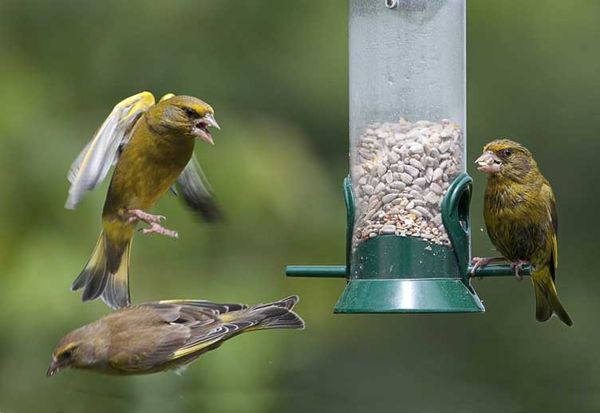
1/600th f8
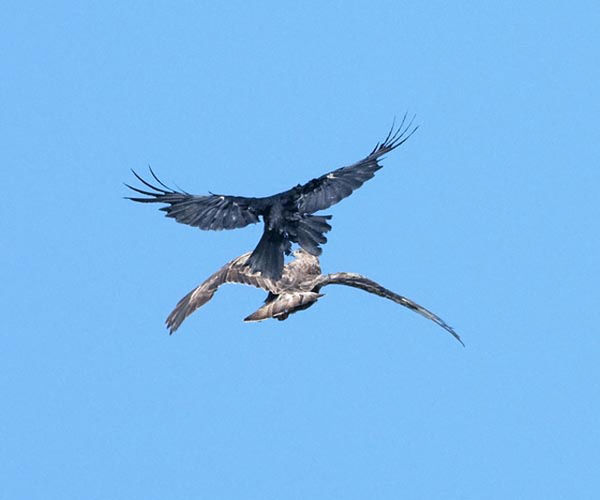
1/500th f11
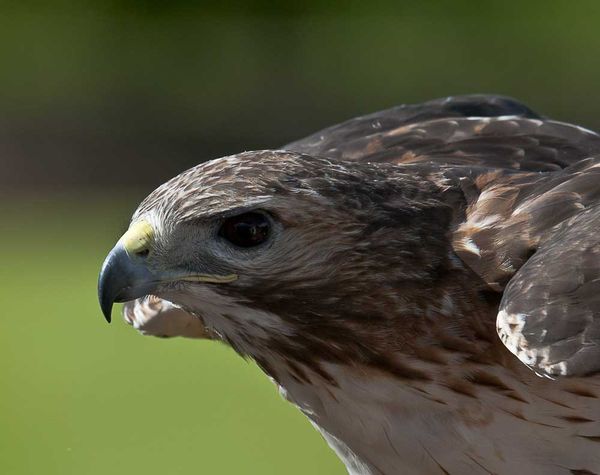
1/500th f11
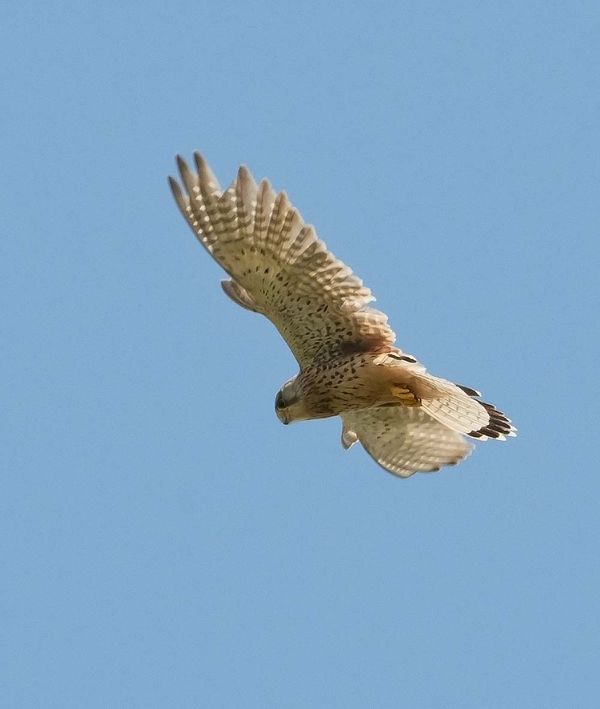
Jul 26, 2012 12:43:25 #
glojo wrote:
quote=CAM1017 b u Sounds like you were shooting... (show quote)
Fantastic shots..I can only dream of getting some like that, although I keep trying. I am mostly interested in shooting terns right now. They fly very fast, and the background can change between blue sky, clouds, trees, water, boat hulls, etc.
Jul 26, 2012 12:51:33 #
glojo
Loc: South Devon, England
nat wrote:
quote=glojo quote=CAM1017 b u Sounds like you ... (show quote)
I shoot peregrine falcons which are the World's fastest flying creatures but I am NOT an expert, I am passing on my personal experiences and it is there for folks to view. There are experts here that shoot completely different to me and produce shots I am really envious of.
ISO
I NEVER put mine on auto BUT... I shoot in all types of conditions and have been caught out by having it on auto but... We are all in different areas of the World and can anyone give a black and white answer
Peregrine falcon 1/500th f16
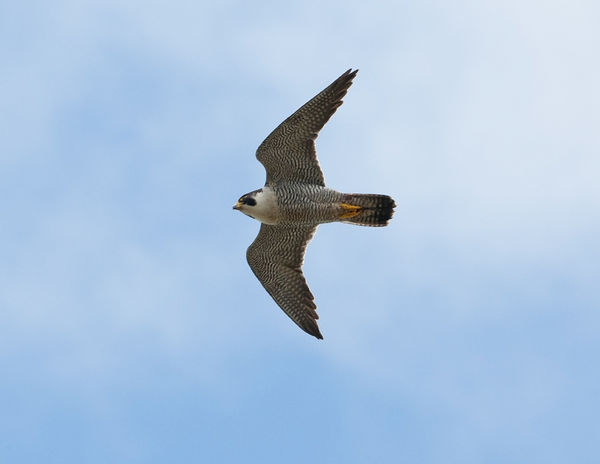
Jul 26, 2012 13:34:09 #
nat wrote:
When going for bifs, I usually set my Canon 7D on ... (show quote)
Nat, because of your shooting comments, I would HIGHLY recommend manual. Whether the birds fly with the water background or fly with the sky background, the light on the birds has not changed ... so why would you want your exposure to change? Lock your f/stop at maybe 8, shutter at maybe 1/1600 and ISO at 640, take a few images and adjust. This is the procedure I use when teaching workshops at Bosque del Apache NWR and it works. When your photographing birds flying in and out of different lighting conditions, I recommend Aperture priority. Enough said except for the flying bird image that was shown as an example was overly processed and is not an example I would use. Have great fun and a lot of patience, J. Goffe and remember the f/stops here!
Jul 26, 2012 13:49:28 #
glojo
Loc: South Devon, England
the f/stops here wrote:
Enough said except for the flying bird image that was shown as an example was overly processed and is not an example I would use. Have great fun and a lot of patience, J. Goffe and remember the f/stops here!
Show me what image is 'overly' processed and I'm sure you know what you are talking about so please tell us why you insist or recommend one priority and how do you guarantee lighting conditions?
I accept if I want to shoot solely terns on a specific day at a specific location then manual might be acceptable unless there are clouds, or we shoot in a different direction and forget we are on manual.
You sound like the professional photographer that plans their day and sets their target for that specific day and I FULLY endorse your comments.
I shoot what appears, where it appears when it appears.
You are certainly sounding the part and I for one would love seeing the images of birds in flight but meantime what images are 'over processed'
Jul 26, 2012 14:39:15 #
glojo wrote:
quote=the f/stops here Enough said except for th... (show quote)
Glojo, the image I was referring to was a raptor in flight on page one. As you well know, there a no set rules but I was speaking as the individual had asked ... same light, different backgrounds. Here are a few images. My best, J. Goffe and remember the f/stops here!
Gyrfalcon or Peregrine in flight
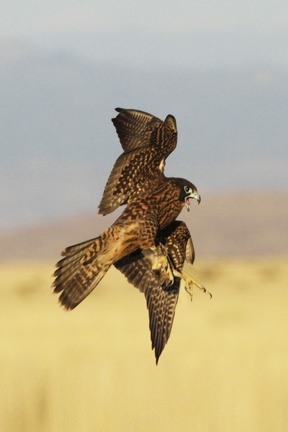
Harris Hawk
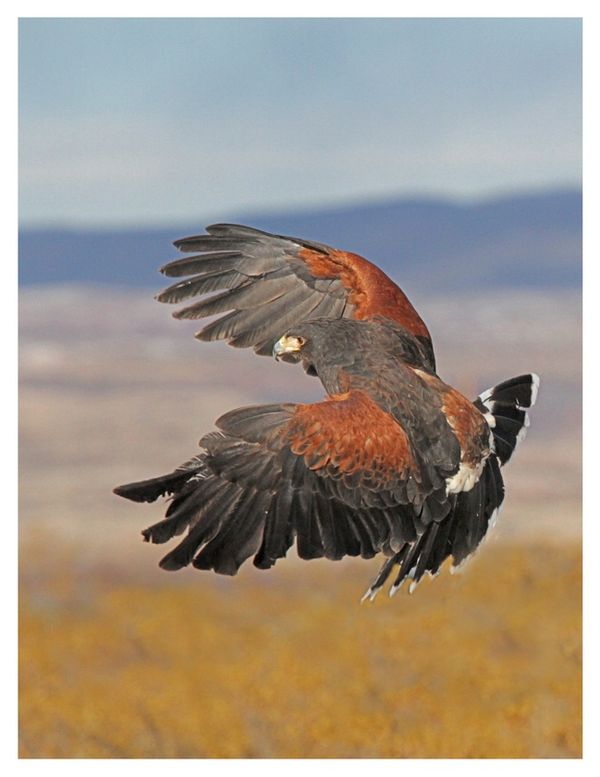
Harris Hawk
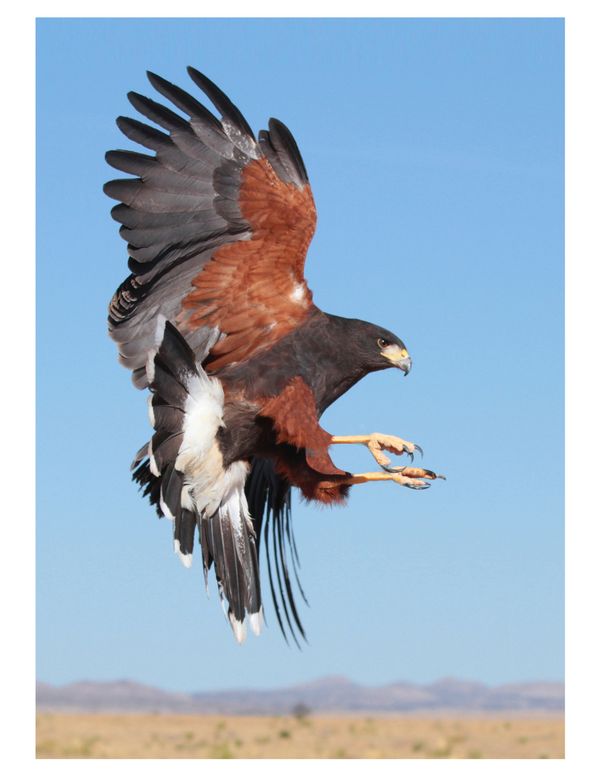
Jul 26, 2012 15:03:32 #
Couple reasons for Aperture Priority. Some of these guys have the f/2.8 or f/4 big lens. The reason is you get the Most light, with the biggest aperture opening, which gives you faster shutter speed and Lower ISO. I use Aperture priority for the shutter speed and low ISO. Also for DOF when two or more birds are sitting together you need Higher Aperture to get the Focus your looking for. I use F/9 when a group of birds, like in a Nesting situation. You want both the male and female bird in focus. Mostly depends on the light for the day, are they deep under the trees or hanging out near the edge in light.
Below is a Good example of why Aperture Priority, Spot Metering, Single Focus Point, Continuous focus mode works on the Nikon. I followed this bird thru the trees and in a split second captured this shot. The camera is very smart.
Below is a Good example of why Aperture Priority, Spot Metering, Single Focus Point, Continuous focus mode works on the Nikon. I followed this bird thru the trees and in a split second captured this shot. The camera is very smart.
MtnMan wrote:
I plan to shoot a different type of BIF this Satur... (show quote)

Jul 26, 2012 15:06:48 #
glojo
Loc: South Devon, England
the f/stops here wrote:
quote=glojo quote=the f/stops here Enough said ... (show quote)
Thanks for getting back as I thought you were referring to my images and I do not have the ability to 'over process' my images.
Looking at the image on page one taken by MtnMan I think you might be referring to that haze type glare on the tail and if that is the case then I fear an apology might be in order as I am guessing that is the sun beating down on the feathers? If the image had been over sharpened then that effect will be seen all around the bird.
That first image of yours is DEFINITELY not a Peregrine falcon . The peregrine has a unique-ish type killer beak that is designed to INSTANTLY kill its prey plus it has a clearly visible darkish marking dropping down underneath the eyes.
Here is the head of a Peregrine and you should be able to see that unique 'V' shape just behind the very sharp pointed beak :)
The flying Peregrine in my shot was travelling at high speed and just over flew our back yard which is in the centre of a large town. Apologies to the OP for not storing the original images but I do want want the larger files being 'borrowed' :)
I hope you understand what I am saying about the beak of the Peregrine and hopefully you will see it is quite unique, hence my comment about your bird not being this specific species. It may indeed be that other falcon but unless it has that black marking under the eye and also the 'V' on the beak, then it is not a similar species.
One last thing.. If you look at the nostril, you will see a 'growth' right in the middle of the 'hole'.. That growth is actually a type of valve that when the birds goes into its stoop will expand and completely seal that nostril. We need to understand that this bird will easily reach speeds that can exceed TWO HUNDRED MILES PER HOUR!!!
Totally agree with you that we cannot possibly have a one situation suits all and I agree for a single occasion like the OP is describing then your points are indeed very valid. I usually shoot in poor light and aperture priority is a recipe for a wasted day :)
Are your shots all taken at a bird of prey type centre as they are all practically stationary and look like they are about to land??

If you want to reply, then register here. Registration is free and your account is created instantly, so you can post right away.







